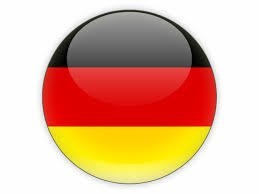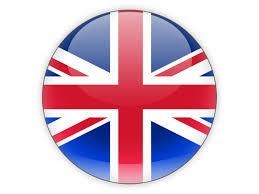
Deine Aufgabe:
Mache ein Foto von Dir oder Deinem GPS-Gerät/Smartphone mit dem Ernst-August Denkmal im Hintergrund und lade es mit Deinem Log-Eintrag hoch.

Your task:
Take a photo of you or your GPS-device with the Ernest-August Memorial as background and upload it with your log-entry.

Ernst-August-Denkmal
Das Ernst-August-Denkmal ist ein Reiterstandbild zu Ehren des Landesherrn des ehemaligen Königreichs Hannover, König Ernst August. Es wurde 1861 von Albert Wolff geschaffen und auf dem Ernst-August-Platz vor dem hannoverschen Hauptbahnhof errichtet. Das Denkmal ist neben der Kröpcke-Uhr einer der wichtigsten Treffpunkte in Hannover, der gemeinhin als „Unterm Schwanz“ bezeichnet wird.
Beschreibung
Das Denkmal zeigt König Ernst August I. in Husarenuniform. Das bronzene Reiterstandbild steht auf einem Sockel aus Granit (vom Brocken) mit der Aufschrift „Dem Landesvater / Sein treues Volk“ sowie am Bronzefuß „Geb. 5. Juni 1771. König 20. Juni 1837. Gest 18 Novbr 1851. Errichtet 21. September 1861“.
Entstehung
Das Denkmal wurde seit 1855 geplant, 1856 ging der Auftrag an den Berliner Bildhauer Christian Daniel Rauch, der Entwurf wurde ausgeführt von seinem Schüler Albert Wolff (der nicht identisch mit dem Schöpfer des Sachsenrosses vor der Universität Friedrich Wilhelm Wolff (1816–1887) ist, dem so genannten „Tier-Wolff“), Uniform und Kopf entstanden nach Entwurf des hannoverschen Bildhauers Heinrich Hesemann (1814–1856). Gegossen wurde es von der Bronzegießerei Bernstorff & Eichwede.Die Kosten betrugen 11.000 Taler für Wolffs Modell, 12.000 Taler für den Bronzeguss und 8.400 Taler für den Granitsockel. Feierlich enthüllt wurde es am 21. September 1861 mit 23.000 Festteilnehmern, davon 8.000 Teilnehmer eines Festzuges vom Waterlooplatz. Ursprünglich umgab das Denkmal ein Zaun, typisch für das 19. Jahrhundert, der das Volk in respektvollem Abstand zum Monument hielt.
Wegen des U-Bahnbaus der Stadtbahn Hannover unter dem Bahnhofplatz wurde das Denkmal 1971 vorübergehend zum Leineschloss auf den heutigen Platz der Göttinger Sieben versetzt, 1975 kehrte es zurück. Es fehlt heute der gestufte Unterbau, auch steht es nicht am alten Standort (in der Fluchtlinie der Joachimstraße), sondern leicht verschoben zum Bahnhof hin.
[Quelle: Wikipedia]

Ernst-August-Memorial
The Ernst August monument is a equestrian statue in honor of the sovereign of the former Kingdom of Hanover, King Ernst August. It was created by Albert Wolff in 1861 and erected on Ernst-August-Platz in front of the Hanover Central Station. The monument is beside the Kröpcke clock one of the most important meeting points in Hanover, which is commonly referred to as "Unterm Schwanz".
Description
The monument shows King Ernst August I in a hussar uniform. The bronze equestrian statue stands on a base of granite (from the Brocken) with the inscription "The country father / his faithful people" as well as on the bronze foot "Geb. June 5, 1771. King June 20, 1837. Gest 18 Nov. 1851. Established September 21, 1861 ".
Formation
The monument has been planned since 1855. In 1856 the commission was commissioned by the Berlin sculptor Christian Daniel Rauch. The design was carried out by his pupil Albert Wolff (who is not identical with the creator of the Saxon cross in front of the University of Friedrich Wilhelm Wolff (1816-1887) The so-called "Tier-Wolff"), the uniform and the head were designed by the Hanoverian sculptor Heinrich Hesemann (1814-1856). It was cast by the bronze foundry Bernstorff & Eichwede. The costs amounted to 11,000 taler for Wolffs model, 12,000 taler for the bronze casting and 8,400 taler for the granite base. It was ceremoniously unveiled on September 21, 1861, with 23,000 participants, of which 8,000 were attending a procession from Waterloo Square. Originally the monument surrounded a fence, typical of the 19th century, which kept the people at a respectful distance from the monument.
Because of the underground construction of the city railway Hanover under the railway station, the monument was temporarily transferred to the Leineschloss in 1971 to the present square of the Göttinger Sieben, 1975 it returned. Today the stepped substructure is missing, it is not located at the old location (in the escape line of Joachimstraße), but slightly moved to the station.
[Source: Wikipedia]

Virtual Reward - 2017/2018
This Virtual Cache is part of a limited release of Virtuals created between August 24, 2017 and August 24, 2018. Only 4,000 cache owners were given the opportunity to hide a Virtual Cache. Learn more about Virtual Rewards on the Geocaching Blog.
Hier ein word cloud aus den Logeinträgen des Ernsten Augusts, Stand Juni 2018:
